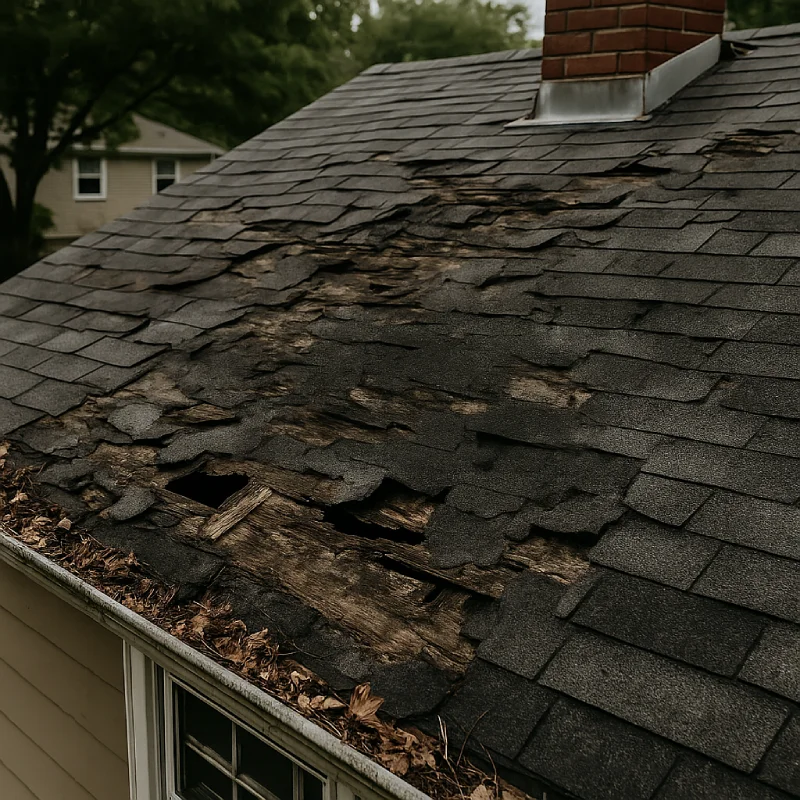
Skipping five years of roof maintenance can lead to severe issues. Accelerated wear occurs, causing shingles to become brittle and crack. This neglect increases risks of water damage and mold growth, potentially resulting in costly repairs. Structural integrity may compromise, leading to issues like sagging ceilings and wall cracks. Utility bills rise due to poor insulation. Finally, property value decreases and marketability suffers, deterring buyers. Learn more about the specific impacts and how to address these concerns effectively.
As homeowners often overlook the importance of regular roof maintenance, they may unwittingly accelerate wear and reduce the lifespan of their roofs. Neglecting routine upkeep allows moss, algae, and debris to accumulate, leading to accelerated material breakdown. This can cause shingles to become brittle, resulting in material failure and cracked surfaces. Furthermore, pooling water from clogged gutters accelerates deterioration, exposing roofing layers to prolonged moisture. Small damages, if left unattended, expand, creating escalating repair needs that can compound over time. Studies show that a well-maintained roof can last significantly longer, whereas a neglected one may need replacement years earlier. By prioritizing maintenance, homeowners can protect their investment and avoid costly surprises down the road. Additionally, routine inspections can identify minor issues before they escalate into major problems. Regular inspections can ensure that the roof’s integrity is preserved and assist in maintaining dependable project management, which is crucial for timely repairs and maintenance.
Neglecting regular roof maintenance significantly increases the risk of water damage and mold growth, which can lead to serious consequences for homeowners and businesses alike. Water infiltration can account for up to 40% of building-related issues, resulting in costly repairs that may exceed $20,000. Additionally, a roof’s longevity can be greatly affected by careful planning and routine upkeep. Mold growth from prolonged moisture exposure can severely compromise indoor air quality, posing health risks and potentially displacing occupants. In addition, mold remediation is not only expensive but also time-consuming, causing disruptions in daily operations. By prioritizing routine inspections, property owners can identify leaks early, saving up to 30% on repair costs. A proactive approach to roof maintenance ultimately protects investments and safeguards a safe environment for everyone involved, as water damage significantly shortens commercial roof lifespan.
Compromised structural integrity is a significant concern for homeowners and property managers, especially when regular roof maintenance is overlooked. Over time, neglect can lead to uneven weight distribution and chronic water infiltration, weakening essential structural components. This deterioration may manifest as sagging ceilings and wall cracks, indicating profound issues. Moreover, repair accessibility challenges can arise, making it difficult to address these problems immediately. In extreme cases, the risk of partial collapse increases, posing safety hazards. Additionally, insurance policy complications may emerge, as neglecting maintenance could void coverage, leaving homeowners responsible for substantial repair costs. Ultimately, prioritizing roof maintenance is indispensable to preserving a home’s structural integrity and ensuring safety for its inhabitants. Water damage can exacerbate these issues, further compromising the structural framework over time. Regular inspections and maintenance ensure the use of quality materials that can withstand Texas weather, thus prolonging the life of the roof and maintaining structural stability.
Regular roof maintenance is essential for preventing higher utility costs associated with poor insulation. When roofs are neglected, cracks and gaps can form, allowing heat to transfer more easily in and out of the home. This results in reduced energy performance, as HVAC systems must work harder to maintain comfortable indoor temperatures. Consequently, homeowners face increased heating and cooling bills due to the strain on their systems. The lack of effective insulation leads to diminished indoor comfort, causing fluctuating temperatures and uneven climate control. Over time, these issues accumulate, significantly raising utility expenses. Investing in routine roof upkeep not only preserves insulation integrity but also prevents unnecessary energy waste, ultimately saving money in the long run.
Safety hazards and risks of accidents are significant concerns for homeowners and roofing professionals alike, especially when roofs are not properly maintained. Neglecting roof upkeep can lead to weakened structural integrity, increasing the likelihood of collapse, especially during severe weather exposure. This poses a direct threat to vulnerable occupant safety, as falling debris or sudden roof failures can result in life-threatening injuries. Additionally, waterlogged areas create slip hazards for anyone accessing the roof, heightening the risk of falls. Mold and pests may also invade neglected spaces, worsening health risks for occupants. Ultimately, neglecting roof maintenance compromises not only the physical safety of individuals but also the overall integrity of the home, making timely inspections and repairs essential.
The condition of a roof plays a crucial role in determining a property’s value and marketability. Maintenance issues can deter potential buyers, causing them to view the home as less desirable. This perception often results in lower offers or a complete withdrawal of interest. Regular maintenance addresses these concerns, preserving value and enhancing the property’s overall appeal in a competitive market.
A well-maintained roof significantly influences a property’s market perception, impacting both its value and appeal to potential buyers. Neglecting roof maintenance can lead to decreased aesthetic appeal, reducing buyer trust and increasing concerns about future expenses. Properties with poor roof conditions often face longer listing times and lower offers.
| Impact of Roof Condition | Consequences |
| Reduced Property Value | Up to 5% decrease |
| Buyer Hesitation | Increased distrust |
| Extended Listing Duration | Higher competition |
| Lower Buyer Interest | Fewer prospective buyers |
| Renovation Costs | Anticipated immediate expenses |
The perception of a deteriorating roof can equate to overall deferred maintenance, discouraging buyers and ultimately affecting the home’s marketability. Prioritizing roof maintenance is essential for maintaining property value and attracting potential buyers.
While many homeowners may overlook routine roof maintenance, the cost concerns associated with neglecting this critical aspect of property care can be significant. A roof in poor condition can lead to higher insurance premiums and decreased property value. Homes with visible roof damage may see values drop by up to 15%, and buyers often hesitate to make offers on such properties, reducing marketability. Additionally, deferred maintenance can result in extensive repairs, costing far more than regular upkeep. Neglected roofs also diminish curb appeal, making homes less attractive to potential buyers. By investing in maintenance, homeowners can preserve their property’s value and enhance its marketability, ensuring a more favorable outcome when it comes time to sell.
Neglecting regular roof maintenance can have extensive long-term financial implications for homeowners. Over five years, minor roof issues can escalate into major problems, resulting in increased repair demand and significantly higher costs. Additionally, neglecting maintenance can jeopardize an insurance policy risk, as insurers may deny claims related to unmaintained roofs. This leaves homeowners responsible for full repair expenses. Moreover, unaddressed material deterioration and structural damage can lead to unexpected costs and complications. Energy efficiency may decline, causing higher utility bills due to poor insulation. Ultimately, the financial burden of deferred maintenance can greatly exceed the costs of regular upkeep, emphasizing the importance of proactive care for long-term savings and protection.
Neglecting roof maintenance for five years can have serious repercussions. Over time, a lack of care leads to accelerated wear and a heightened risk of water damage, which can compromise the integrity of your home. Property owners often find themselves facing increased utility costs and potential safety hazards, not to mention the risk of diminished property value.
Regular roof maintenance is not just a good practice—it’s essential for protecting your investment and ensuring the safety of your home. By prioritizing this upkeep, you can extend the lifespan of your roof, safeguard your living space, and avoid costly repairs in the future.
At TriStar Built, we understand the importance of quality craftsmanship and clear communication. As a locally owned and insured construction company based in North Texas, we pride ourselves on our quality-first approach, our long-term relationships with subcontractors, and our commitment to client-focused service. We’re here to help you protect what matters most: your home.
Routine maintenance is key to avoiding expensive repairs and extending the life of your roof. A roof inspection should be performed at least once a year, but ideally twice a year, especially in areas prone to storms or harsh winters. Seasonal maintenance like gutter cleaning, checking for loose shingles, and sealing gaps helps detect early issues before they cause damage to your roof structure or home interior.
A few warning signals that your roof needs to be replaced include missing shingles, water stains, sagging, or noticeable rot in the decking. If your roof is older than 20–25 years, it may have sustained too much wear and tear. An aging roof not only compromises the structure but also shortens the lifespan of your roof and drives up energy bills due to poor insulation.
Maintaining your roof is a proactive step that many insurance companies favor. A well-documented maintenance checklist and routine roof inspection show you’ve taken the necessary steps to protect your roof. This can speed up claim approval and even lower premiums. Failing to maintain your roof can lead to denied claims, especially if neglect is found to have caused damage.
A professional roof inspection can uncover hidden issues in your residential roof that might otherwise go unnoticed. Inspections are especially important for flat roofs, which are more prone to pooling water. Flat roofs should be inspected more frequently, particularly after heavy rain or snow, to avoid structural failures. Proper inspections allow you to prepare and replace your roof before critical failure occurs.
A new roof can last 20 to 50 years with proper care, depending on the roofing material and climate. Proper maintenance, including checking seals, flashing, and cleaning drainage systems, can significantly improve how long a roof lasts. Skipping routine upkeep shortens the lifespan of your roof and increases the likelihood of needing a full roof replacement sooner than expected.
Ignoring your roof’s maintenance can lead to moisture buildup, mold growth, and ice dams in colder regions. Over time, this neglect can result in structural issues, leaks, and higher energy bills. If the roof is exposed to long-term damage without intervention, a complete roof replacement may be necessary to restore safety and energy efficiency.
A shingled roof that is curling, cracking, or losing granules is a clear sign that your roof needs attention. If repairs are no longer effective, and the roof is one of the home’s original systems, it's time to replace your roof. A roof installation with modern materials can improve energy efficiency and help keep your roof intact against harsh weather.
An older roof often hides underlying issues like damaged decking, loose shingles, or inefficient insulation. Maintaining your roof in older homes ensures the roof protects your home from moisture and temperature fluctuations. Skipping inspections increases the chance of structural problems and drives the need for more frequent roof repair or eventual roof replacement.
Preparing your roof before winter includes checking for rot, sealing flashing, and removing debris. This kind of roof but also gutter care can prevent ice dams and water leaks. Seasonal checks are a vital part of roof and home care. Without these measures, winter damage can escalate into major leaks and expensive repairs.
If the condition of your roof is poor but localized, a targeted roof repair might suffice. However, if damage is widespread or the roof may have multiple weak points, a professional roofing contractor can advise if you need a new roof. Having a contractor check on job progress regularly and guide you through the decision-making process is key.

Whether you’re remodeling a home, expanding a business, or starting from the ground up, TriStar Built is here to guide you every step of the way. With a focus on craftsmanship, communication, and results that last, we make the construction process clear, smooth, and worth every investment.

LOCATION: 2126 James Street, Denton, TX 76205
PHONE: (940) 381-2222
© 2025 TRISTAR BUILT - ALL RIGHTS RESERVED | WEB DESIGN & SEO BY: Authority Solutions®